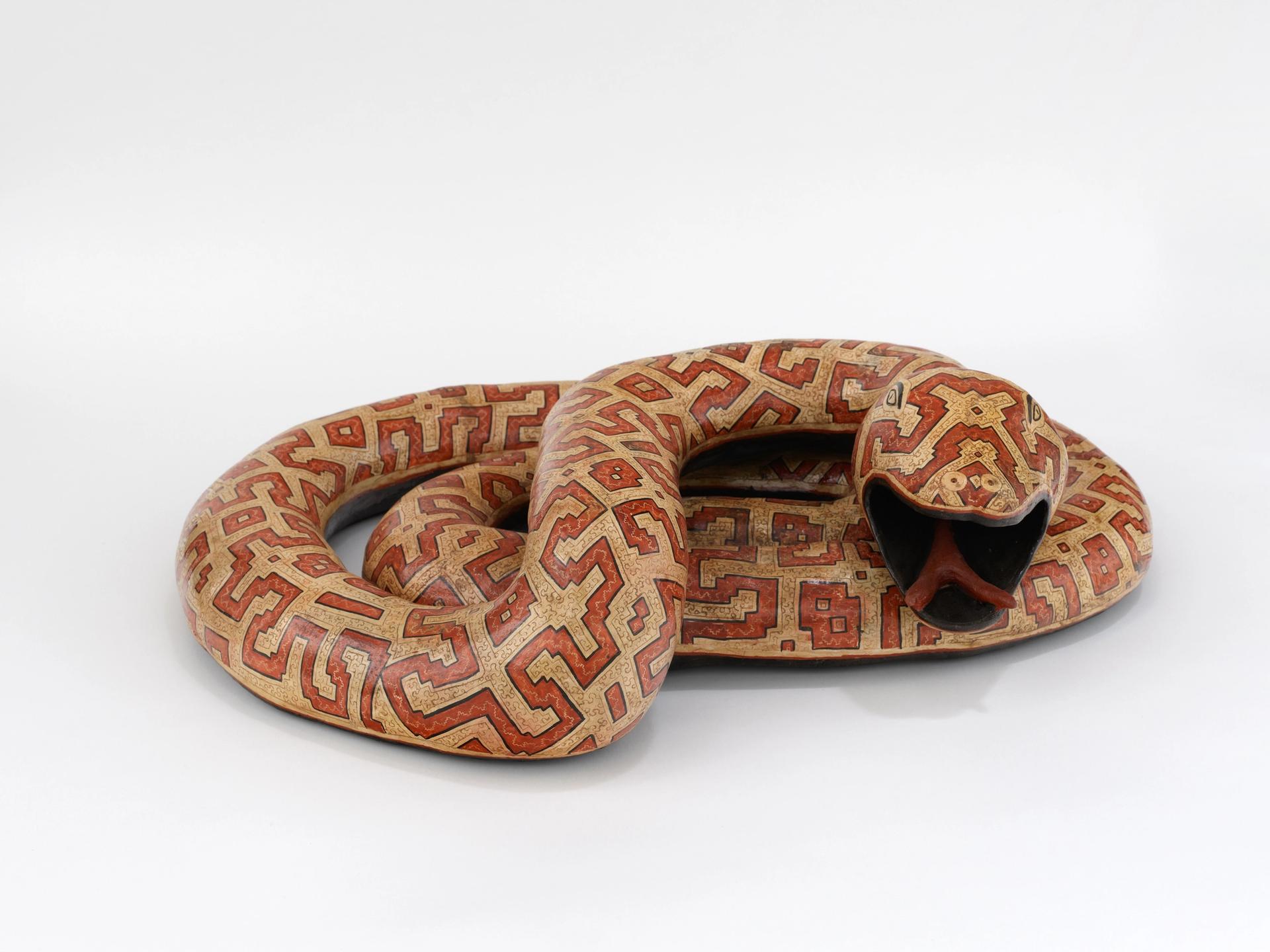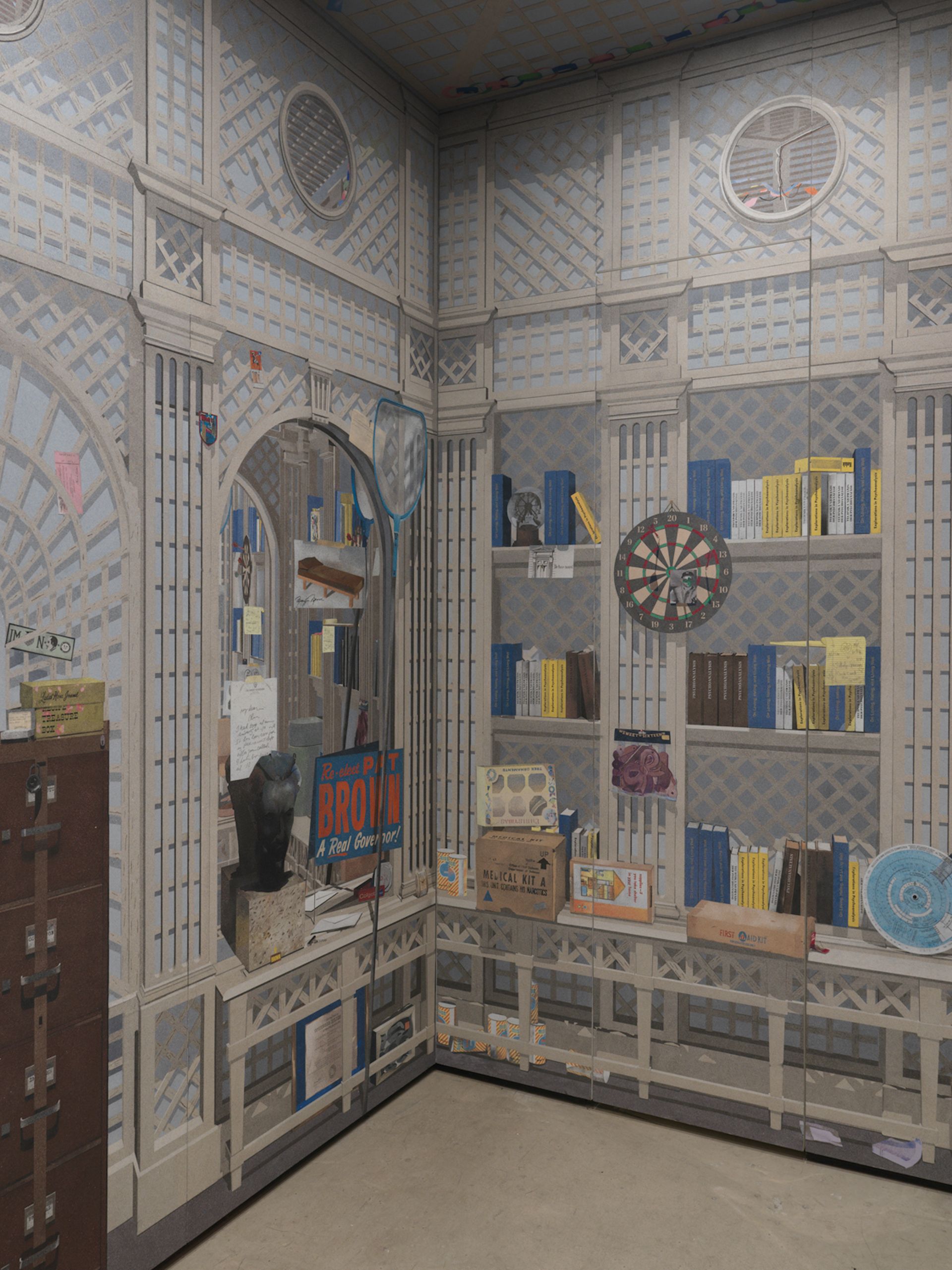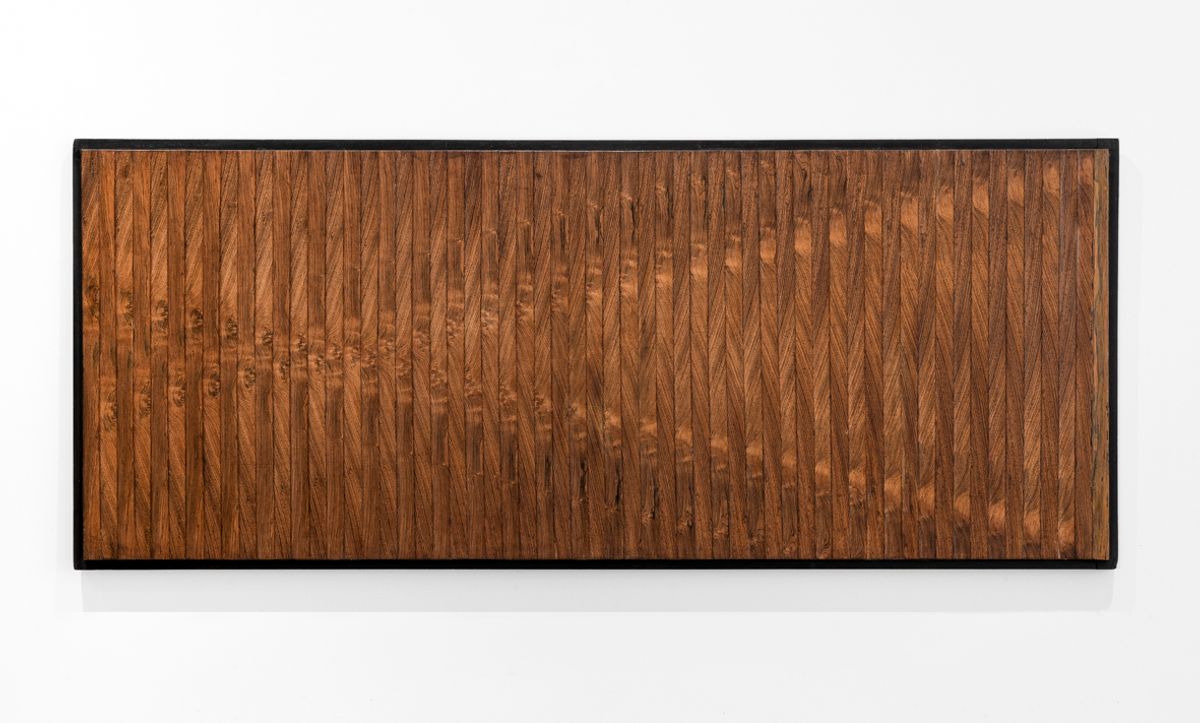Abraham Palatnik: Seismograph of Colour
Until 19 February at Nara Roesler, 511 West 21st Street, Manhattan
The first posthumous show devoted to the late Brazilian artist Abraham Palatnik is a career-spanning exhibition presenting kinetic sculptures and hypnotising optical artworks, as well as examples of lesser-known facets of his six-decade career, from a representational landscape from the late 1940s to the first light-box the artist created in the 1950s, a work foundational to his lifelong focus on mechanically-engineered art. The works “show a continuity with landscape, or with its organic forms: undular, elliptical, turbulent”, writes the curator Luis Pérez-Oramas. “Contrary to the anti-natural programme of kineticism, nature subsists in these works that use machinery to produce their effects.” Works like Progressão 60-A (1965), comprised of strips of jacaranda wood that form a sinuous optical effect, recall the patterns of magnetic fields, as do later paintings like Untitled (1991), in which Palatnik embossed the canvas with twine to create oscillating waves of colour. Palatnik died in 2020 due to coronavirus-related complications, leaving behind an “ineffable legacy and artistic trajectory”, the dealer Nara Roesler said in an earlier statement.

Celia Vasquez Yui, Boa (2021). Courtesy of the artist and Salon 94, New York. © Celia Vasquez Yui.
Celia Vasquez Yui: The Council of the Mother Spirits of the Animals
Until 5 March at Salon 94, 3 East 89th Street, Manhattan
The Shipibo Conibo Centre, a Harlem-based non-profit organisation that aims to elevate the artistic and ritualistic traditions of the Shipibo-Konibo people of the Peruvian Amazon, has partnered with Salon 94 to present a captivating exhibition of handmade ceramics by the Peruvian artist Celia Vasquez Yui. Using a coiling method, an ancient ceramic technique, the artist has created a series of animal and human figures adorned with complex undulating geometric patterns endemic to the Shipibo-Konibo culture, in which the use of the hallucinogenic ayahuasca vine is central to spirituality and artistic tradition. More than 50 ceramics, like a spiraling snake, a piranha and anthropomorphic creatures, are exhibited in an altar-like fixture that aims to visualise the ceremonial context that their patterns evoke, while a soundscape of Shipibo songs floods the gallery. The artist herself is said to follow preparations and rituals akin to a Shipibo shaman when creating her work, through abstaining from sex and specific foods and chanting and blowing tobacco to ignite the ceramic kiln. The show is one of three final exhibitions on view before Salon 94 will merge with Lévy Gorvy and the dealer Amalia Dayan to form the single gallery LGDR.

Installation view of Cynthia Talmadge: Franklin Fifth Elena at 56 Henry Courtesy the artist and 56 Henry. Photo: Matt Grubb.
Cynthia Talmadge: Franklin Fifth Helena
Until 30 January at 56 Henry, 56 Henry Street, Manhattan
Stepping into Cynthia Talmadge’s installation at 56 Henry, an ambitious gallery in a space the size of a walk-in closet, is like traveling to another place and time—though it might more accurately be described as a mashup of several different places. In exacting sand paintings that cover the walls and ceiling, the artist has created an architectural trompe l’oeil installation inspired by the 15th century studiolo from the Ducal Palace in Gubbio, now in the Metropolitan Museum’s collection. Studiolos were traditionally places for studious reflection, and this one offers plenty to study with its enigmatic mix of objects from 12305 Fifth Helena Drive, Marilyn Monroe’s home when she died in 1962, and nearby 902 Franklin Street, her psychoanalyst Ralph Greenson’s home at the time. The detective work of attributing the depicted objects to Munroe or Greenson becomes even more complicated with the knowledge of the psychoanalyst’s bizarre course of treatment for the Hollywood icon. For Talmadge, it seems, there is no clear solution or takeaway, only fascinating webs of connections and reflections in which to get caught up.


